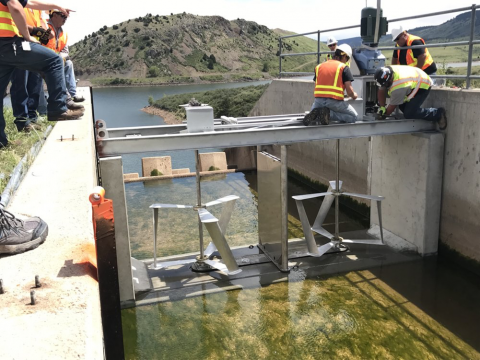The clean energy transition depends on critical materials like rare earth elements (REEs) that power wind turbine generators, electric vehicles and other clean energy technologies, materials, and processes. REEs are found together in mineral deposits, which are then separated from one another to use only the REEs needed for manufacturing. Rare earth elements are uniquely difficult, as some, such as cerium, are abundant in mineral deposits and not used widely. Others, like neodymium are widely used in clean energy technologies, but much less abundant. This challenge is often referred to as the rare earth balance problem. The U.S. Department of Energy’s (DOE) Advanced Materials and Manufacturing Technologies Office (AMMTO) and Critical Materials Institute (CMI), an Energy Innovation Hub, are working to address this problem by finding new ways to use cerium that will shore up market demand for an abundant REE and create more value from domestic rare-earth mining operations.
CMI paired cerium with aluminum to create Aluminum Cerium (Al-Ce) alloys with tailored-properties and unlocked an array of new applications for the REE. In 2020, recognizing the achievements of the alloy, the Aluminum Association awarded the official designation of this new class of Al-Ce alloys. This designation allows for the launch of global industrial applications and creates more opportunities for industry to produce the alloys using the designations and enabling CMI commercialization.
Over time, CMI has added several projects to its portfolio of Al-Ce alloys to boost scale-up, licensing, and commercialization efforts. These projects, supported by AMMTO, bring together the advanced expertise of researchers from CMI, DOE’s National Labs, and universities. The various development projects in CMI and scale-up of processing has received significant support from Eck Industries, an aluminum foundry in Wisconsin who signed an exclusive license with CMI to commercialize the Al-Ce alloys.

Finding uses for cerium supports domestic rare-earth mining operations and provides innovative materials to U.S. manufacturers. The Al-Ce alloys developed by CMI have proven to be adaptable, lightweight, resistant to corrosion, and stable in temperatures up to 500℃. Furthermore, there are reductions in energy and emissions associated with the production of the Al-Ce alloy, because it doesn’t require heat treatment, an energy-intensive process to soften metals and improve formability. So far, the alloy has been used across a diverse range of applications including cylinder heads, turbo chargers, and turbine blades for hydroelectric turbines, pistons, and rotors.
The impacts of the Al-Ce alloy are significant:
- A new market is created for cerium which addresses the rare earth balance problem where economic value is spread over a broader set of REEs beyond just the magnet REE. Increases in market demand then drives production of critical rare earth elements needed for magnets.
- Due to the alloys unique microstructure and resulting properties, Al-Ce alloy can be used to reduce energy use across multiple large-scale transportation applications.
See the full story: Commercializing the Aluminum-Cerium Alloy: A Portfolio of R&D Projects
